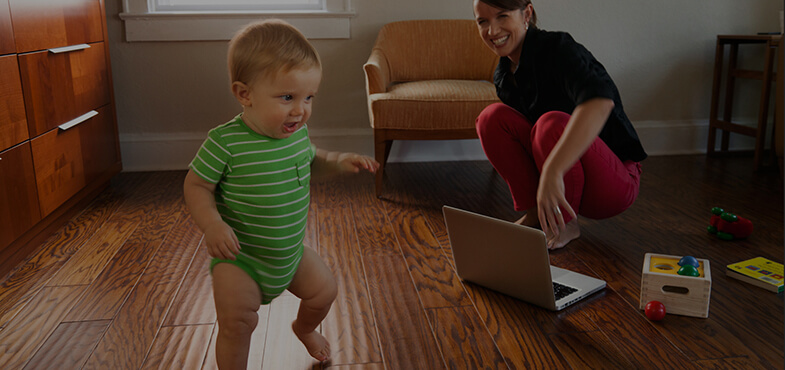Before you know it, your little one will be toddling all over the place. This milestone in development requires your encouragement, attention and safety precautions.
Most babies take their first steps during the end of their first year (between nine and 12 months). Don't worry if this development comes a little later for your baby. Many children don't walk until they're 16 or 17 months old. If you feel as if your baby is lagging behind significantly, however, you should bring it up with your doctor.
How Walking Develops
Most babies begin by crawling, although some skip this stage altogether and jump right into standing up and eventually walking. If your baby is an experienced crawler, they may be trying to attempt more challenging manoeuvers such as crawling up stairs. While stair-climbing may help your baby learn how to judge height and depth and develop their sense of balance, for safety reasons it is important to install stair gates so they can't attempt climbing them without you on hand to help.
Before Walking Your Baby Will “Cruise”
Very mobile babies next attempt to stand up and take a few steps while holding onto a piece of furniture, a technique known as "cruising." If your baby is becoming confident, they'll soon discover how to move across a room using pieces of furniture as balancing aids. Learning how to cruise like this is the last physical skill your baby needs to master before they begin walking without assistance. Encourage them to cruise and eventually walk by holding out your hands. Show your baby how to bend at the knees to sit down. If they reach a favourite toy by manoeuvering themselves across the room, remember to give them lots of praise.
Childproof Your Home
As your baby gains mobility, be sure your home is childproofed. A cruising or walking baby can get into a lot of mischief. Also, as your baby uses their hands, legs and feet to move around, they’re much more likely to get dirty, their skin may get dry from the extra friction that can occur with walking, and they can become more prone to nicks and cuts. For a quick and easy way to keep your baby clean, dampen a soft wash cloth and use JOHNSON’S® TOP-TO-TOE® baby wash to gently cleanse in between bath time. Use a gentle, moisturising baby cleanser when bathing your baby, such as JOHNSON'S® baby bath milk + rice .
To keep your baby's skin moisturised after the bath, try a gentle moisturiser such as JOHNSON'S® baby lotion.
Based on content from JOHNSON'S® Your Baby & Toddler, from Birth to 3 Years, DK Publishing Inc., 2004.
Mums around the world look to JOHNSON’S® to care for their babies
We are committed to working with mums, healthcare experts and scientists to ensure our products continue achieving the highest JOHNSON’S® baby standards.
Our commitment to healthy babies goes beyond our products
We take great pride in our initiatives that help babies grow up in a healthy community and a healthier world.


